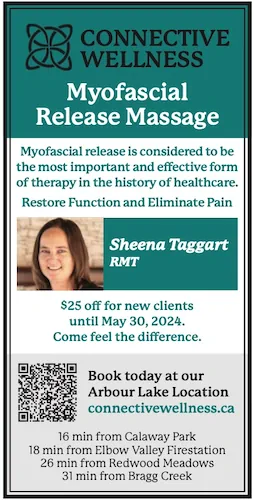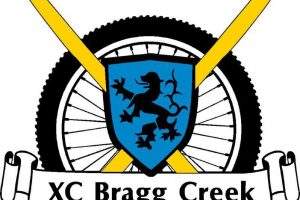WHIPLASH FROM A MASSAGE THERAPIST PERSPECTIVE
Ever been treated for whiplash? Whiplash is an injury caused by a sudden jerk to the head and neck. What this definition doesn’t get into is that the injury can cascade into the jaw and all the way down to the glutes. The full extent of the injury may only be known up to 72 hours after the accident. It doesn’t even have to happen in a vehicle. We can also get whiplash from playing sports, being thrown from a horse, or even bumper cars at the amusement park.
I’m going to talk about how whiplash treatments are governed in Alberta according to the Diagnostic Treatment Protocol Regulations. Keep in mind this is an overview and I am going to be discussing primarily about what massage can do for us in our treatments through our vehicle insurance company.
The first part is understanding how the system works. If we get in a car accident and we are feeling pain or our range of motion has changed these are reasons to get assessed within 10 days of the accident. Professionals that can assess us are physical therapists, chiropractors, and physicians. Keep in mind that physicians are paid via Alberta Health Services (AHS) so an initial visit to them would not count towards our allotted insurance treatments. These experts may diagnose us with either a sprain, strain or a Whiplash-Associated Disorder (WAD). For this article I am only going to explain WAD1 and 2 even though sprains and strains are treated similarly. A WAD1 is when we’re feeling neck pain, stiffness or tenderness but it has not affected our range of motion. A WAD2 is when it has affected our range of motion. Pain means our body is compensating and we are out of alignment; whether it is muscles or bones.
For a WAD1 we receive 10 visits from insurance within 90-days from the accident while with WAD2 we receive 21 visits whether it’s physical therapy, Chiropractic, or adjunctive therapies. Examples of adjunctive therapies are Massage or Acupuncture. Note that we will need to be preauthorized for adjunctive therapies by a primary health care practitioner. We can do either a single practitioner or a combination of practitioners. It is easier for the practitioners if we do it all at the same clinic but it is not required. If we decide to use two different practitioners in different locations we just need to keep track of how many visits we do and how they are calculated.
If we are not back to the 100% we were before the accidents and we’ve used up our visits or the time has expired, we can request additional visits for massage therapy to a max of $350.
Now down to the treatment aspect of whiplash with therapeutic massage therapy. Therapeutic Massage therapists treat the whole body as well as reduce and align the scar tissue. Our pain may be at our neck but our whole body remembers the accident. That is why therapeutic massage therapists typically start with a relaxation massage to decrease the sympathetic nervous system firing, treat compensating muscles, reduce edema and prevent adhesions. This all can be done in the acute phase which is up to 72 hours after the accident.
The subacute/repair phase is from 72 hours to 14 weeks. In the early subacute stage the therapist then adds reducing inflammation, maintaining circulation above the injury, reducing muscle spasms, reducing trigger points without disturbing the injured site, and maintaining the range of motion.
In the late subacute stage the therapist will also reduce trigger points and hypertonicity in the neck and shoulder muscles including the anterior neck (supra/infrahyoids), anterior thoracic (pecs, subclavius, rotator cuff muscles, intercostals, and diaphragm), and back muscles (mid/lower traps, rhomboids, latissimus dorsi, thoracic erector spinae, and the deep postural muscles). Deep neck muscles like longus colli and cervical multifidi are treated indirectly using isometric antagonist contractions. If left untreated, a hypertonic longus colli will reduce the lordotic curve of the neck. As the inflammation subsides the focus changes to reducing adhesions and encouraging the formation of functional scar tissue by realigning the connective tissue. At this point techniques are used to gradually increase the range of motion, and improve circulation directly to the affected area.
Other conditions that can occur with whiplash are temporomandibular joint dysfunction (TMJD) and thoracic outlet syndrome which our massage therapist can help us out with.
The therapeutic massage therapist will also provide us with a self-care plan as we progress which could include these treatments:
- Hydrotherapy such as applying cold in the acute stage and contrasting for circulation in the subacute phase.
- Self-massage can be done in the late subacute and chronic stage.
- Vehicle headrest and seat positioning
- Remedial exercise plan to gradually strengthen the muscles.
- Stretches to increase the range of motion of the muscles.
To find a nearby massage therapist,
go to one of the four Alberta Massage Associations listed: Massage Therapy Association of Alberta (MTAA), Certified Registered Massage Therapy Association (CRMTA), Natural Health Practitioners of Canada (NHPC), and Canadian Massage and Manual Osteopathic Therapist Association (CMMOTA).
Sheena Taggart RMT
Massage Therapist – Connective Wellness Myofascial Release Massage connectivewellness.ca




























